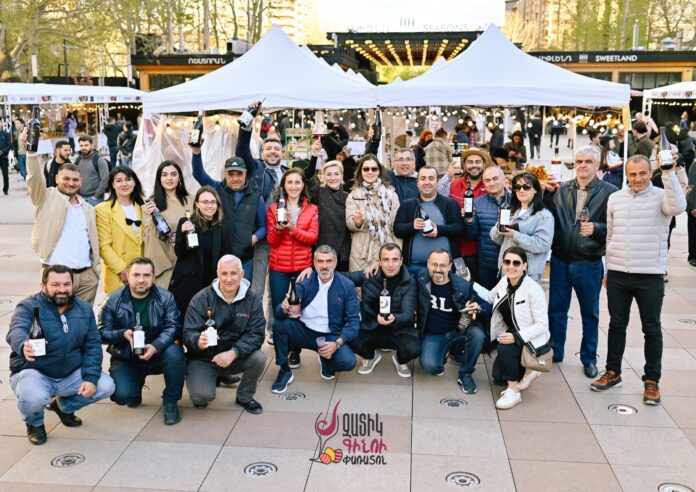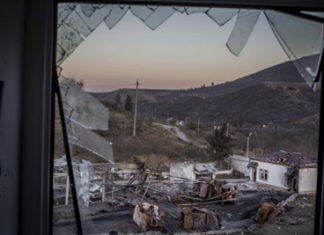YEREVAN — By now the word has gotten out about the up-and-coming Armenian wine sector, but there’s much more to be done to make it a global name. One of the organizations invested in that mission is the NGO Wines of Armenia (WoA), which organized the Zatik [“Easter”] Wine Festival on April 7 and 8 at Diana Apcar Park in the center of Yerevan in partnership with and supported by the German Agency for International Cooperation (GIZ). Their events aim to raise the populace’s awareness about Armenian wines and increase domestic demand for it. Yerevan residents browsed a large selection of booths featuring WoA’s member brands sold at cost price, along with others featuring various locally-sourced food products and handicrafts. The timing of the festival, as the name suggests, was on the eve of Easter, giving shoppers the perfect chance to fill their tables for the upcoming holiday celebration. Children also had the chance to paint their own eggs, and after a priest’s blessing of the festival, enjoyed a traditional “Easter egg duel.” This Zatik Festival complemented WoA’s Christmastime “Wine Meets Art” event, which paired wines with jazz composers, sculptors, and painters, representing how both wine and art have their own great cultures behind them – and provide the inspiration required for creation.
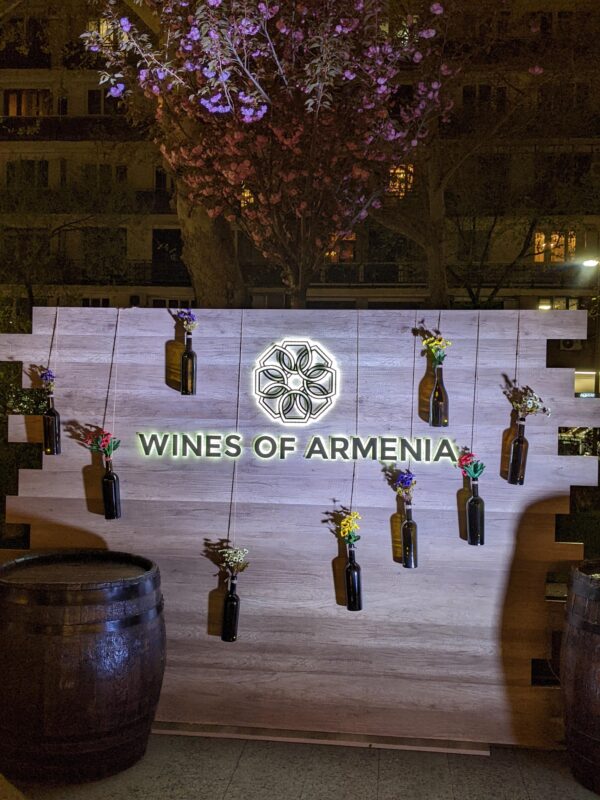
Wines of Armenia is a relatively new NGO, founded in 2021 as an umbrella brand to promote Armenian wines and facilitate their sale, especially abroad. This is particularly important because of the blistering pace at which the Armenian wine sector has been growing: its number of registered companies has jumped from 30 in 2018 to 160 in 2022. “We established Wines of Armenia in order to have our say to the world about the ongoing renaissance of Armenian wines,” said Executive Director Lilit Grigoryan. Headed by nine board members, WoA already includes 27 member companies and counting. It caters to a sweet spot in the field at the intersection of mature mid-sized companies with high-quality wine. “We want to be represented through quality, not quantity, working with medium- and high-priced wines which retain that personal, hand-crafted touch,” explained Grigoryan. “Wines of Armenia serves as a common trademark for certifying wine, promotes exports and demand at home, and develops marketing strategies for making that happen.”
Members need to be at least a year old and produce at least 5,000 bottles of wine a year. To ensure quality and filter for the best brands, members participate in an annual blind taste test judged by a panel of experts to rate their wines. Failure to pass the rigorous standards for three years in a row results in a loss of membership. However, the intention is not to punish but encourage. “The intention is to keep the producers in line with the ever-changing market, while allowing them the freedom to innovate. The vintners receive important feedback – for example, whether one of their wine’s attributes, such as aroma or finish, is perceived as lacking, which they can take into account for their next batches,” described Grigoryan. “Through this cooperation, everyone wins, and Armenian wines continue their advance.” Another benefit for members is that their wines are offered on WoA’s eCommerce platform, which has a warehouse in Berlin from which anyone ordering from Europe has the opportunity to receive their wines within 24 hours. This has turned Europe into a strategic market for many of the wines.
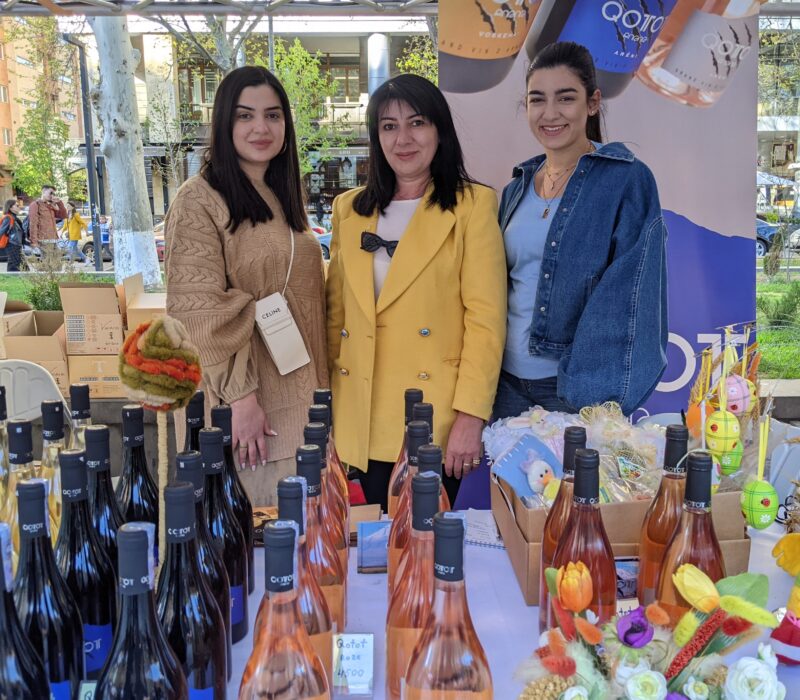
There are numerous interesting stories among Wines of Armenia’s brands. For example, QOTOT Wines is run by a mother-daughter team from a vineyard in the town of Chiva near Areni. Its name is based on a legend from Chiva about a young boy and a bear cub [qotot in Armenian] who forged a friendship seeking out the best berries to eat. Like the little bear, QOTOT says it picks the best grapes for its wines, using the native Areni and Voskehat varieties. While it is still quite rare to have a female-run wine company, its CEO Lilit Ghazaryan says “I don’t feel disadvantaged as a woman in the field. In fact, I feel it’s appreciated.” Through WoA, she’s had the opportunity to present QOTOT abroad such as in Germany at Prowein, one of the world’s premiere wine trade shows. At 25,000 bottles a year, QOTOT is already on the Russian, French, and German markets, and has eyes on more international partners, especially the US. “It has helped us in our mission to represent Armenian wine and show the world how high quality it is,” Ghazaryan said, pointing to the rare grape varieties, volcanic soil, and high-altitude growing which each enhance the wine’s flavor as some of the best aspects of Armenian wines for the world to discover.
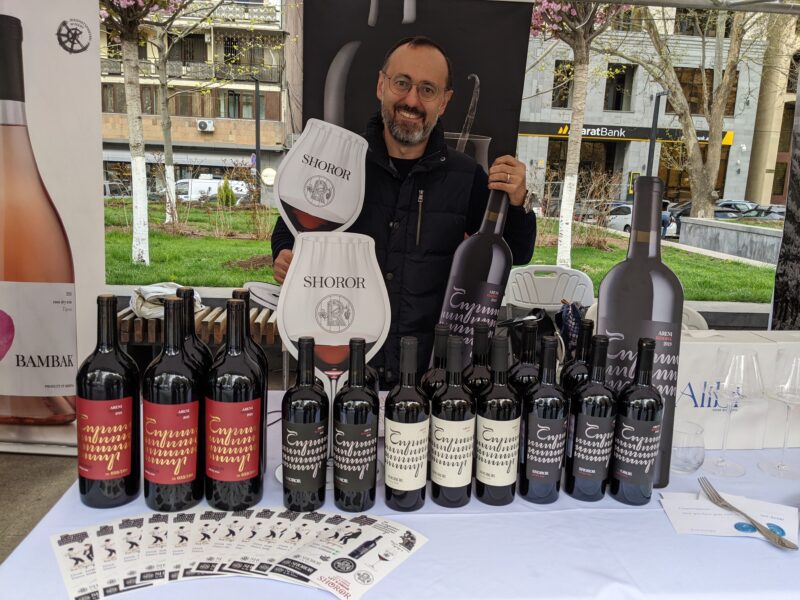
One of WoA’s newest members is Ruben Lokk, who calls himself the Areni grape’s biggest fan. His wine Shoror is named after a traditional Armenian sway dance, just as how a sommelier might sway after drinking. Born in Ganja (Gandzak), Azerbaijan, Lokk’s family moved to Armenia shortly before the fall of the Soviet Union. He became a lawyer and practiced for years in Moscow, but as he described it, “I wanted to pursue a career that was closer to my soul.” Moving back to Yerevan, he happened to live on Saryan Street just as its first wine bar, In Vino, opened. He started attending events there to see what all the fuss over wine was about and became hooked. “In Vino is my first alma mater in the wine world,” Lokk said, then taking it a step further by attending EVN Wine Academy and starting Shoror, which hit the market in 2021. He doesn’t do blends, but instead is committed to 100% Areni grape wines. Why? “Areni is a noble indigenous grape variety to Armenia. It can be compared to Pinot Noir, having similar cherry notes, fruitiness and light tannins. It’s hard to get a bad batch of it, it’s such a good grape.”
So what can you do to be part of this exciting movement? Ghazaryan says “we would encourage people to visit Armenia where you can visit the wineries for tastings and enjoy the attractions like the popular Wine Days celebration organized by the festival company EventToura in June.” If you’re in Europe, why not order some bottles and try it yourself, and hopefully there will be more opportunities to do so in the United States as well. “Armenia is the cradle of winemaking and we are striving to recover this image. Buying these wines will boost that mission,” Ghazaryan encouraged. And what will the future bring? No one can know for sure, but Lokk has an idea, bolding declaring: “Armenian wines will conquer the world!”



